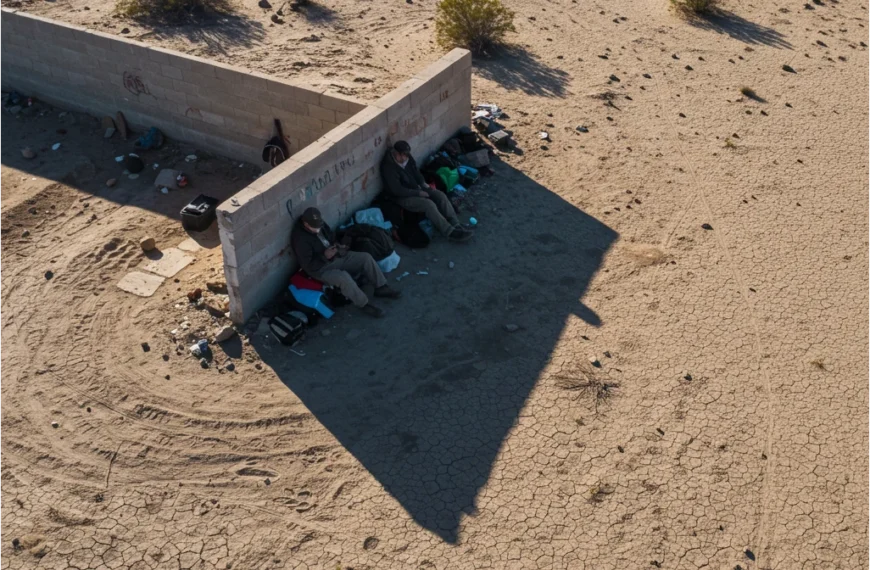The Pinal County Board of Supervisors unanimously approved a proclamation yesterday declaring April 21-28, 2025, as “International Dark Sky Week” throughout the county. For the second consecutive year, the county will observe a 30-minute “lights out” period on Monday, April 21, from 8:30 to 9:00 p.m., when residents are encouraged to turn off their lights and step outside to appreciate the night sky. The proclamation, presented by Communications and Marketing Director James Daniels, received enthusiastic support from supervisors and dark sky advocates alike.
Dark sky advocates Sam Miller, Vice Chair of the Board of Directors for the Southern Arizona Dark Sky Chapter, and Mike Weasner from Oracle presented the proclamation, which aims to raise awareness about light pollution and encourage residents to appreciate and protect the night sky.
“Your proclamation once again encourages residents to value the night sky and draws awareness to the fact that later generations may not be able to appreciate the night sky as we do today,” Sam Miller told the supervisors during the meeting.
What is Dark Sky International?
The proclamation identifies Dark Sky International, headquartered in Tucson, as “the globally recognized authority on light pollution.” The organization “uses International Dark Sky Week to raise awareness of light pollution, provide free education, resources, and solutions to the public to encourage the protection of and enjoyment of dark skies and responsible outdoor lighting,” according to the proclamation read at the meeting.
According to the proclamation, light pollution represents a waste of natural resources amounting to approximately $3 billion per year in wasted energy costs across the United States and contributes to diminished energy security.
Economic and Environmental Benefits
Supervisor Jeff Serdy emphasized the importance of dark skies to tourism in the county, particularly in his and Vice-Chairman Jeff McClure’s districts.
“This is so important to mine and Mr. McClure’s district because we are tourism districts. There’s a whole segment of celestial tourism where they just come out of the city,” Serdy said. “Five million people in Maricopa County, they can’t see anything. They have to come over to us to be able to see anything and they do.”
The proclamation also highlighted that optical astronomy, which is hindered by light pollution, represents a statewide capital investment of more than $1.3 billion and an annual economic return of over $250 million, including an indirect attachment to more than 150,000 jobs through the aerospace and defense sector.
Beyond economic impacts, the supervisors noted the ecological importance of dark skies. The proclamation states that Arizona is home to dozens of nocturnal wildlife species, including the black-footed ferret, one of the most endangered mammals on the North American continent. These species rely on undisturbed night environments to hunt, mate, and thrive.
Arizona’s Astronomical Heritage
Mike Weasner, dressed as a European astronomer from the 1700s, emphasized Arizona’s astronomical heritage during the meeting.
“If it had not been for our dark skies back in the early 1900s, Arizona would not have been the site of the discovery of that planet [Pluto],” Weasner said.
According to the proclamation, Arizona hosts 10% of the world’s largest telescopes, including the world’s largest optical telescope, and many renowned observatories such as the Lowell Observatory (where Pluto was discovered), the Smithsonian Astrophysical Observatory/Whipple Observatory, the University of Arizona’s MMT and Large Binocular Telescope Observatories, Kitt Peak National Observatory, and the Vatican Observatory.
Dark Sky Week Activities
The county has organized several events to celebrate Dark Sky Week.
“We ask residents across Pinal County to go lights out and appreciate the night sky and wonders of our universe,” Daniels said regarding the April 21 event.
Residents can visit pinal.gov/1546/Dark-Skies for more information on these and additional events.
What Residents Can Do
Sam Miller explained that “International Dark Sky Week draws attention to the beauty of the night sky, that light pollution is increasing, and how all of us can do our part to reduce irresponsible outdoor lighting.”
The primary activity residents are encouraged to participate in is the “lights out” event on April 21 between 8:30 and 9:00 p.m., when everyone can “go outside and just look up,” according to Sam Miller.
Miller noted that “Pinal County has a long history of protecting the night sky through its outdoor lighting ordinance, brochures, enforcements,” and the supervisors’ proclamation for Dark Sky Week is now “several years in the running.”
Looking Ahead
With Pinal County’s continued growth and development, protecting dark skies remains an ongoing challenge. Sam Miller noted in the meeting that “satellite data is telling us that we are, and telling us things that our eyes already see that sky glow over our residential areas is increasing.”
The county’s continued support for dark sky initiatives through this annual proclamation represents its commitment to preserving the night sky. As Sam Miller stated, the proclamation “draws awareness to the fact that later generations may not be able to appreciate the night sky as we do today” while also “fostering an interest in science and nature in our younger generations.”








